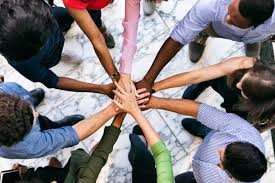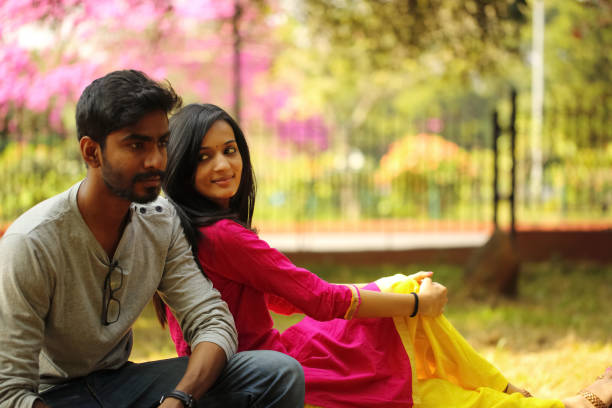Kenya is often described as the “heartbeat of Africa,” not only for its breathtaking landscapes and wildlife but also for its vibrant cultural diversity. Home to more than 40 ethnic groups, each with unique languages, traditions, music, and ways of life, Kenya is a living mosaic of cultures. Despite their differences, these communities are united by shared values of resilience, hospitality, and pride in their heritage. Kenya’s cultural diversity is both a source of strength and a cornerstone of national identity.
The Ethnic Composition of Kenya
Kenya’s population is composed of several broad cultural groups:
Bantu Communities: The largest group, including the Kikuyu, Luhya, Kamba, Kisii, and Meru. They traditionally practice farming and live in the fertile central and western regions.
Nilotic Communities: Including the Luo, Maasai, Turkana, and Samburu, known for pastoralism and fishing along lakes and savannah regions.
Cushitic Communities: Such as the Somali, Borana, and Rendille, living mostly in the northern and northeastern regions, traditionally engaged in camel herding and trade.
Asian and European Communities: Descendants of settlers, traders, and migrants who also contribute to Kenya’s multicultural identity.
This diversity has created a cultural richness reflected in language, dress, cuisine, and social practices.
Languages of Kenya
Language is one of the clearest reflections of Kenya’s diversity. The country has over 60 languages, most belonging to the Bantu, Nilotic, or Cushitic families.
Kiswahili (Swahili) is the national language, uniting communities across Kenya and East Africa. It originated from centuries of interaction between Africans, Arabs, and Persians along the coast.
English, introduced during colonial rule, remains the official language of government, business, and education.
Local languages like Kikuyu, Dholuo, Luhya, Kamba, and Somali are widely spoken within communities and preserve cultural identity.
The multilingual nature of Kenya not only promotes inclusivity but also enhances creativity in music, literature, and media.
Traditional Dress and Adornment
Clothing in Kenya varies by community, often reflecting history, climate, and symbolism.
The Maasai are world-famous for their red shukas (blankets) and intricate beadwork, which carry deep cultural meanings about age, status, and identity.
The Samburu wear brightly colored cloth and elaborate jewelry, often mirroring Maasai traditions but with unique variations.
In central Kenya, the Kikuyu traditionally wore garments made of animal skins, though today they embrace modern styles while preserving bead adornments for ceremonies.
Along the coast, Swahili attire reflects Islamic influence, with men wearing kanzus (long white robes) and women donning buibuis and hijabs.
Kenya’s traditional attire continues to inspire modern fashion, appearing in weddings, festivals, and international fashion shows.
Music, Dance, and Storytelling
Music and dance are central to Kenyan culture, serving both entertainment and ceremonial purposes.
The Luo are known for their ohangla dance, performed with drums and rhythmic movement.
The Luhya celebrate with isukuti drumming, especially during weddings and harvest festivals.
The Maasai and Samburu perform jumping dances (adumu), symbolizing strength and unity.
Swahili music, such as taarab, blends African, Arabic, and Indian influences, often performed with stringed instruments and poetic lyrics.
Storytelling is another vital tradition, with folktales, proverbs, and riddles passing wisdom across generations. Modern Kenyan artists, poets, and writers continue this tradition, blending old themes with contemporary issues.
Food and Cuisine
Kenyan cuisine reflects its diversity, with dishes varying by region and culture.
Ugali (a stiff porridge made from maize flour) is the staple food across communities.
The Luo are known for fish dishes, particularly tilapia and Nile perch from Lake Victoria.
The Kikuyu enjoy meals like githeri (a mixture of beans and maize) and irio (mashed potatoes, beans, and peas).
The Maasai traditionally consume milk, meat, and blood as part of their pastoralist diet.
Along the coast, Swahili cuisine offers spiced rice (pilau), coconut curries, and snacks like mahamri and viazi karai.
Kenyan cuisine reflects the land’s abundance while incorporating influences from India, the Middle East, and Europe.
Religion and Spirituality
Kenya’s cultural diversity is also seen in its religious practices.
Christianity is the dominant faith, practiced by about 80% of the population, introduced by missionaries during colonial times.
Islam is widely practiced along the coast and among communities with historical ties to Arab traders.
Traditional African religions remain influential, especially in rural areas, where rituals, sacrifices, and beliefs in ancestral spirits continue to shape life.
Religion plays a significant role in festivals, community gatherings, and the moral values of Kenyan society.
Cultural Festivals and Celebrations
Kenya’s diversity comes alive during cultural festivals:
Lamu Cultural Festival celebrates Swahili heritage with dhow races, poetry, and traditional music.
Turkana Festival brings together communities of northern Kenya, showcasing dances, songs, and crafts.
Maralal International Camel Derby combines sports and culture in Samburu County, attracting global visitors.
National holidays like Madaraka Day, Mashujaa Day, and Jamhuri Day are marked with patriotic celebrations uniting all Kenyans.
These festivals not only preserve culture but also promote peace and tourism.
Unity in Diversity
While diversity is a strength, it has also posed challenges, particularly in politics, where ethnic loyalties sometimes fuel division. However, Kenyans continue to emphasize unity under the national motto “Harambee” (pulling together).
Kiswahili serves as a unifying language.
National institutions like schools and churches bring together people from different backgrounds.
Shared love for sports, especially athletics and football, unites Kenyans on the global stage.
Kenya’s 2010 Constitution also emphasizes inclusivity and the recognition of minority groups, ensuring that diversity is celebrated rather than marginalized.
Modern Influence of Culture
Kenya’s culture is dynamic, adapting to modern times while preserving tradition. Urban youth mix hip-hop, reggae, and traditional rhythms to create new forms of music like gengetone. Fashion designers blend traditional fabrics with modern styles, while filmmakers and writers tell stories that reflect Kenya’s evolving identity.
Social media has also amplified cultural pride, with Kenyans sharing traditions, languages, and creativity online, reaching global audiences.
Conclusion
Kenya’s cultural diversity is a treasure that enriches the nation’s identity. From the beadwork of the Maasai to the poetry of the Swahili, from the rhythms of the Luhya drums to the flavors of coastal cuisine, Kenya’s traditions weave together a tapestry of resilience and beauty.
Though challenges of division exist, Kenyans continue to embrace unity, drawing strength from the motto “Harambee.” In celebrating cultural diversity, Kenya not only preserves its past but also builds a future where every community contributes to the national story.
Kenya is more than a country of wildlife and landscapes — it is a land of people whose cultures are as vast and colorful as the land itself.









Comments (0)